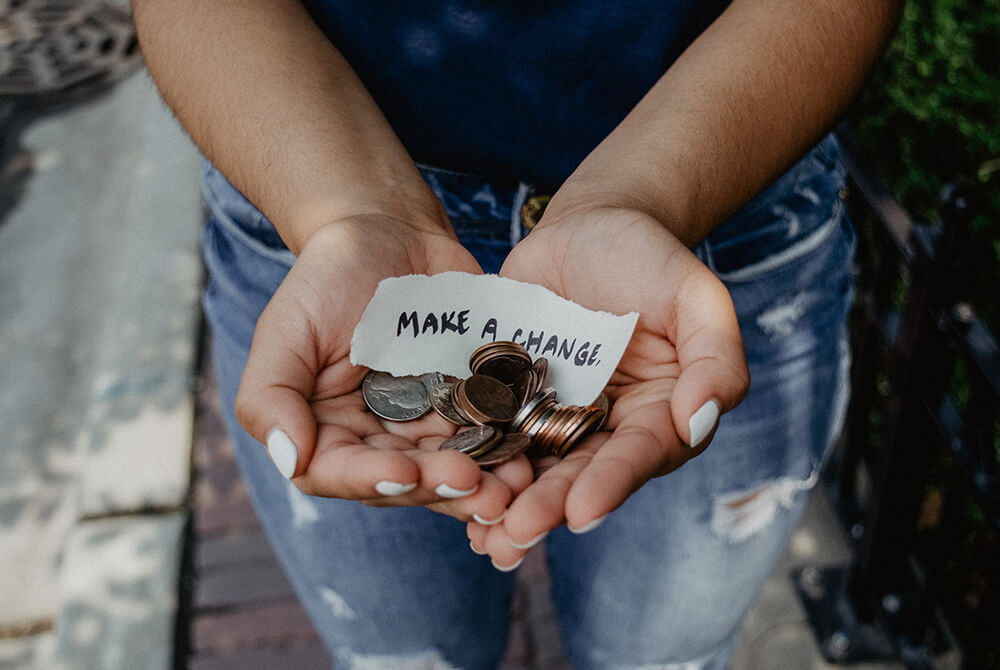
The Best Follow-Up Timeline to Engage First-Time Donors
Some sources estimate that as many as 60% of donors only give one donation. If you receive a large number of these single donations, that’s a sign that you need to better engage first-time donors. Since recurring donations help offset your acquisition costs and lead to more predictable and sustainable funding, follow-up is a must-do. Of course, it’s often easier said than done.
If you have no idea how to handle your follow-up, this timeline should serve as a helpful guide. Use it to help you design your own follow-up strategy and tweak things as you go along.
Immediately Engage First-Time Donors with a ‘Thank You’
When it comes to online gifting, it’s important to send out an immediate ‘thank you.’ You can do this with automated redirects to a ‘thank you’ page, a confirmation email, or even an SMS to instantly acknowledge a donor’s gift. Sure, donors will know this method is scripted and automated. This doesn’t make it any less of an expected part of an online transaction.
It also gives you a good place to share links to additional resources, like a report on where your donations from last quarter went. In other words, this automatic thank you could be used to go ahead and plant the seed for relationship building if you can get them to engage further with your organization. However, the main focus should be on simply saying thank you. Make sure they know their gift is appreciated.
Within 48 Hours: Personally Call Them
A personal acknowledgment is an absolute must for donations of any size. That’s why you should always make a point to call a donor within 48 hours of receiving their gift. It may be a bit tough to get the hang of this phone call when you start out. You’ll eventually get to a point, though, where you know exactly what to say. You shouldn’t follow a script, but writing down some talking points can help. Make sure these points direct the conversation and make a connection with the donor.
Just like with any automated “thank you” you send out, you should begin the phone call with some genuine words of appreciation. Introduce yourself and make sure they know that your organization truly needs and generously accepts their gift. Just this small effort of personal outreach has been shown to make donors four times more likely to give again.
Within One Week: Send a Handwritten Note
If you thought a phone call was the end of the story when you engage first-time donors, think again. Continued engagement is a must to ensure ongoing gifting and handwritten notes remain a very special way to acknowledge your new donors. In this handwritten note, you should go ahead and begin softly introducing them to your organization’s projects and needs. This is also the perfect opportunity to let them know how their donation is being put to good use and perhaps giving them an invitation to learn more about your active projects, whether on your website or in person.
Personalizing handwritten notes is a big deal and is especially worthwhile when reaching out to donors who have the capacity for larger gifts that could make a monumental impact on your organization. Keeping notes about donors in your file will help you stay on top of all your donors and build relationships further. On the other hand, when it comes to a large volume of smaller gifts, you can recruit board members to help you write. You can also invite volunteers and make a fun “Thank-a-Thon” event out of it.
Within One Month: Update The Donor on Progress
It’s been a month since their first donation, which means you have had plenty of time to put their money to good use or at least earmark it for the right cause. This is information you should definitely pass on to the donor because, at the end of the day, they just want to know that they are making an impact. So, your progress update should focus on empowering them.
Get as specific as possible and try to quantify the impact that their donations can make. Most major organizations are great examples of quantifying impact, like the Arbor Day Foundation, which equates every dollar donated to one tree planted. Tracking how much you need to collect in total for different projects also helps donors see attainable goals that they can take action and contribute to.
You should make progress reports a monthly occurrence. Email it to your donors regularly regardless of how often they give. This alone can help inspire one-time donors to continue gifting once they see that they’re actually able to make a difference through your organization.
Within Six Weeks: Invite The Donor to An Event
Within six weeks after receiving a donor’s gift, you should make an effort to invite them to an event that your organization is hosting or benefiting from. This event will help them get more personally involved with your organization and it provides a wonderful platform for building out your relationship with them, introducing them to other donors and volunteers, and discussing the need for more donors and volunteers.
The event you invite donors to should be as interactive as possible to help with relationship building. Giving some “swag” to first-time donors at this event will also help you seal the deal, whether it’s a fun t-shirt or something else that will help them get closer to your organization and feel more like an active member of your community. When you engage first-time donors in this manner, you create a real connection.
Within Eight Weeks: Request Feedback
People love when you listen to them. That’s why requesting feedback should be a part of your ongoing communication and relationship building strategy. Of course, you don’t want to wait too long to begin involving donors in the decision-making process at your organization. Involving them early and often will help make even small gift donors feel important and empowered, and that’s exactly what you need to be doing.
Emailing surveys and polls will help keep people engaged, but you can also make your feedback requests more personal, and there are times when you most certainly should. For instance, based on the metrics you are tracking, it may be a good time to send a feedback request when you notice a particular donor is starting to become disengaged.
Reaching out to them on a personal level will reinforce their importance for your organization and also give them the opportunity to discuss anything that may be keeping them on the fence from becoming a regular donor and/or volunteer. Allow them to speak openly about anything that concerns or confuses them and make sure you reinforce how their donation is going toward a good use.
Three Months Later: Ask for Another Donation
Has it been three months since a donor offered their first contribution? Now is the time to ask them directly for another gift. However, you don’t necessarily just want to send a bulk email asking them to give. If you want to increase your chances of success, you should select a method based on the donor’s demographics. This decision should also focus on the payment method they used to donate.
Some donors, for example, may appreciate a phone call. The more direct you can be with your appeal, the more likely you are to get a favorable answer. Of course, you don’t want to pressure a donor into feeling like they have to give again. Some donors simply won’t be ready to give again at the three month mark. They may still give again, however, in the future. The key is measuring ongoing engagement and making sure they’re staying active with your organization and its projects.
If a donor becomes very active in ministry events, it’s a good sign even if they haven’t donated again. On the other hand, donors who have become disengaged for several months won’t likely re-engage and donate easily. If they continue to be reluctant or non-responsive, it’s time to focus your efforts somewhere else.
From Here On Out: Continue to Engage Donors
Continue engagement truly is the secret to success when it comes to getting a steady stream of donations. Fortunately, social media and other online platforms make ongoing engagement fairly simple. That’s as you have a strategy and the right person creating content for you. The types of content that work include everything from donor shout-outs to pictures of what makes your ministry great. Volunteers, events, and the projects your organization is working on are all great subjects.
This content will help engage first-time donors and keep them excited. This is especially the case if you always focus on maintaining a tone of empowerment. Always offer messages of “We couldn’t do this without you!” If you can do that, you can most certainly keep your donors active and engaged with your work, it’s just a matter of saying the right things at the right time.


